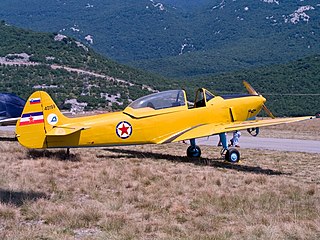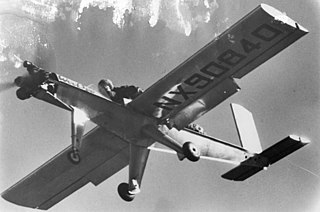| Beecraft Queen Bee | |
|---|---|
 | |
| The Queen Bee in flight | |
| Role | Four-seat cabin monoplane |
| National origin | United States |
| Manufacturer | Bee Aviation Associates |
| Designer | William S. Chana, Ken S. Coward |
| First flight | 1960 |
| Number built | 1 |
The Beecraft Queen Bee was an American V-tailed four-seat cabin monoplane, designed and built by Bee Aviation Associates (Beecraft). [1]

The United States of America (USA), commonly known as the United States or America, is a country composed of 50 states, a federal district, five major self-governing territories, and various possessions. At 3.8 million square miles, the United States is the world's third or fourth largest country by total area and is slightly smaller than the entire continent of Europe's 3.9 million square miles. With a population of over 327 million people, the U.S. is the third most populous country. The capital is Washington, D.C., and the largest city by population is New York City. Forty-eight states and the capital's federal district are contiguous in North America between Canada and Mexico. The State of Alaska is in the northwest corner of North America, bordered by Canada to the east and across the Bering Strait from Russia to the west. The State of Hawaii is an archipelago in the mid-Pacific Ocean. The U.S. territories are scattered about the Pacific Ocean and the Caribbean Sea, stretching across nine official time zones. The extremely diverse geography, climate, and wildlife of the United States make it one of the world's 17 megadiverse countries.

In aircraft, a V-tail or Vee-tail is an unconventional arrangement of the tail control surfaces that replaces the traditional fin and horizontal surfaces with two surfaces set in a V-shaped configuration when viewed from the front or rear of the aircraft. The aft edge of each twin surface is a hinged control surface which combines the functions of both a rudder and elevators.

A monoplane is a fixed-wing aircraft with a single main wing plane, in contrast to a biplane or other multiplane, each of which has multiple planes.





















